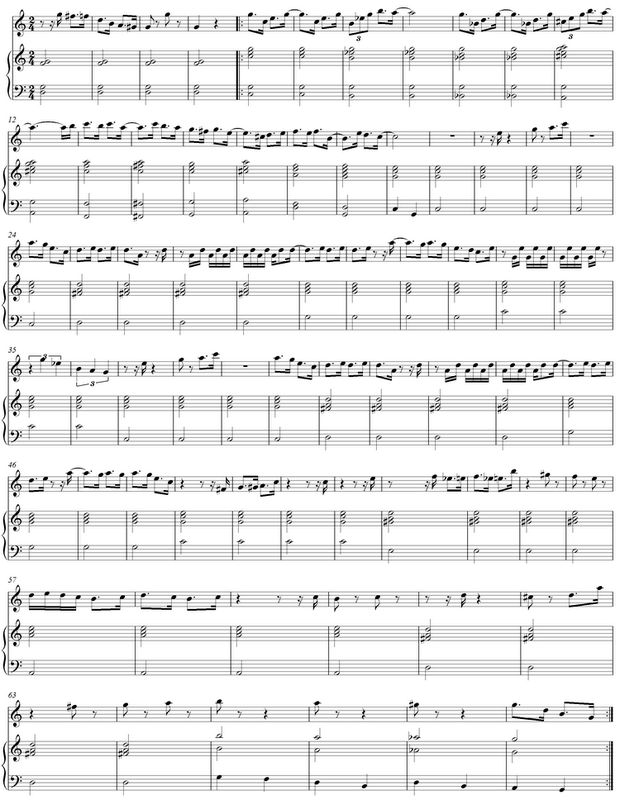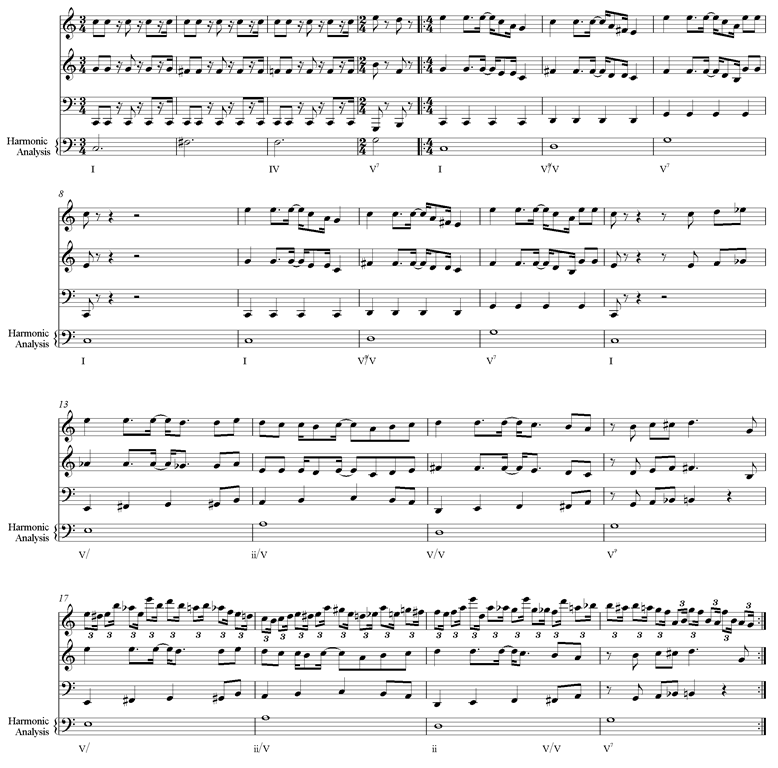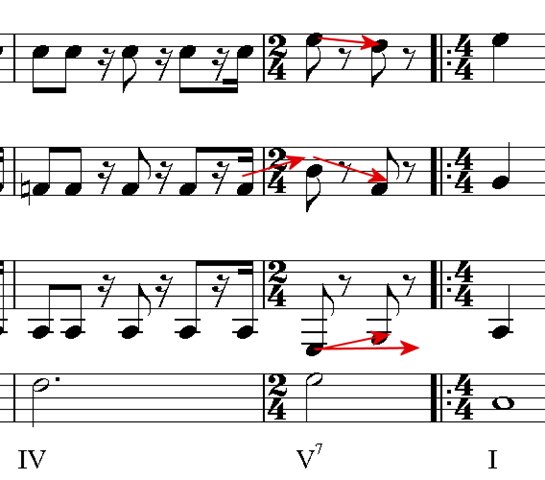
This object is divided into four distinct sections:
Introduction (mm. 1-4): Sustaining dominant harmony G
Section A (mm. 5-20): A 16 measure period (some theory texts would describe this as a sentence) centered on the tonic C
Section B (mm. 21-52): A parallel double period also centered on C.
Section C (mm. 53-68): Two phrases using a circle of fifths progression to travel form E to C.
Section A has the most interesting set of harmonic motions. Using parsimonious voice leading, this phrase travels from C, to Eb+, to gm, then lastly to A7. This is accomplished with the bass opening fifth C-G. While the G is maintained, the lowest note drops a half step each time the harmony changes. The soprano voice parallels this motion from E to C#.
The A7 then moves to F major. If you ignores the seventh on the A chord, you could relate these two triads with transformational theories: R(P(Amajor))=Fmajor. We could also bring in some sort of split/fuse transformational theory, but I’ll leave that for now.
(NB: refer to terms defined at the bottom of the page for information on Transformational theories)
If we start thinking big picture, it is interesting to note that the F major then moves to C major in a reverse of the Character Select Object introduction.
C then moves to A (an RP transformation) to start a circle of fifths progression back to C.
Section B is not nearly as harmonically exciting, with a repetition of the chord progression I, V/V, V7, I twice. The harmonic rhythm slows to one harmony per four measures
Section C is more of the same, as C transforms to E (LP transformation) then follows a circle of fifths back to the dominant G, which sets up the loop back to Section A.
While slightly out of order, it is interesting to note the expansion of the circle of fifth progression in this object. Section B uses D to G to C; Section A contains A to d to G to C; then finally Section C starts at E to a to D to G (ultimately back to C). D and A also have fluctuating qualities throughout.
Is this the time to bring in theories of non-linear time in music?
I’ll save that for later!

